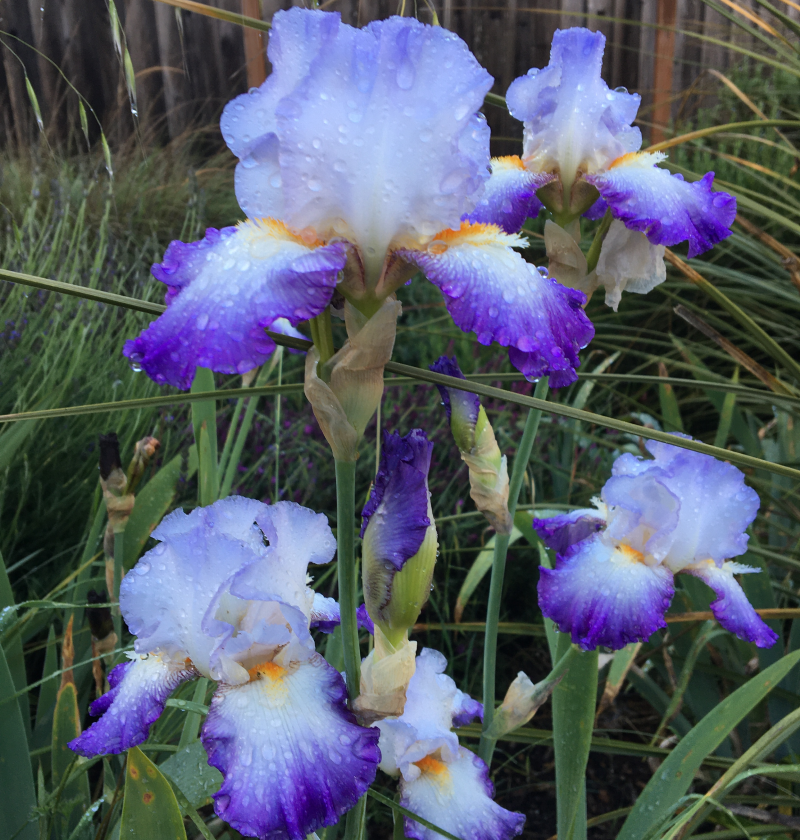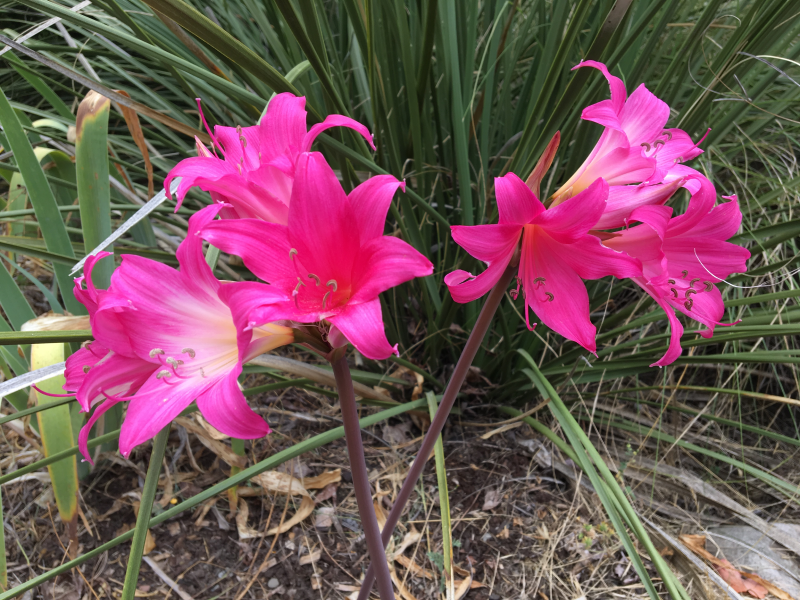Preparing for Fall Planting
By Josh Reilly
Fall is the season of bedrock Puritan virtues in the garden, like delayed gratification, preparedness, hard work, and thrift. It’s the best time to plant perennials, shrubs, trees, bulbs, many leafy vegetables, vines, and almost everything else (except bare root roses, best planted in January). In the San Lorenzo Valley, Fall brings the rain. Hence, savings on water bills and preparation for the rigors of Winter, when growth slows, leaves fall, and frost encrusts the morning landscape. And next Summer, root systems established in Fall will be bigger and better able to capture dwindling soil water supplies. Of course, in our changing climate, there’s no guarantee of ANY rain any time after tomorrow. Still, it’s easier for your plants to endure the transition to their new home now than in the cold of Winter, the dry heat of Summer or the unpredictability of Spring. Let nature help you here, folks.
Many bulbs should be lifted and divided in September and October. About every three years, depending on the plant, bulbs can get overcrowded and become less productive. Some can be left to ramble, but others, including bearded irises, really benefit by lifting and dividing. Using a long handled digging fork, push the tines all the way into the soil and gently, but firmly lift the whole cluster. Tease apart the clumps, separating the biggest, healthiest bulbs from others. Cut off all but about 6 inches of foliage. Replant your biggest divisions by themselves, about 6 inches apart. Toss in a trowel full of well-aged compost. Bury them just up to the top of the bulb. Our native Irises (I. douglasiana and “Pacific Coast” hybrids) can do without dividing. I have some that have gone undivided for almost ten years and still flower happily throughout April. They seem less prone to gopher damage than their well-bred bearded cousins. And do well in any shady or semi-shady part of the garden, indefinitely.

Daffodils don’t really need to be divided. In September, all our local nurseries and garden centers fill up with bags of daffodil bulbs of every type and description. Daffodil plants contain toxins, but our local gophers seem able to eat them anyway. They also move partly eaten bulbs elsewhere in their tunnels, where they push up weak foliage, but do not flower. As if eating them whole was not insult enough! Try gopher baskets or treat bulbs and soil with pest deterrents like “Critter Ridder” or chili pepper spray. I am awaiting results with these techniques. Gophers aside, daffodils are easy to naturalize and grow. They suffer few diseases and require no fertilizer or water. Deer leave them alone. Plant them 6 inches down, eyes up and roots down, then cover and neglect them. God willing and the river don’t rise, your grandchildren will be able to enjoy your handiwork. They will be the first bright, gorgeous flower in your yard, starting in February, for as long as you garden where you have planted them.
Your local garden center will probably also have ranunculus, crocus, crocosmia, tulips, snow drops (Galanthus), freesias, grape hyacinth, Allium, lilies, Camassia, and multiple other bulbs, all of which should be planted in Fall. Most of these will require deer and gopher protection. If you have a well-developed clump of Belladonna lilies (Amaryllis, also called Pink or Naked Ladies), and want more, dig them when the flowers start to fade, divide and bury just under the dirt. Remember that their big floppy mass of green Spring foliage takes up a lot more space than their long, narrow Fall flower stems. The garden books all say that Amaryllis doesn’t like to be moved. Maybe, but they are all over Santa Cruz and they didn’t get up and walk there! You will find, however, that they are less productive a year or two after you plant them. Fortunately, deer and gophers seem completely indifferent to these local garden standbys.
Josh Reilly, aka Uncle Skip, writes about seasonal gardening from his home in beautiful Ben Lomond, California.
Featured photo of Belladonna Lillies by Josh Reilly
The San Lorenzo Valley Post is your essential guide to life in the Santa Cruz Mountains. We're dedicated to delivering the latest news, events, and stories that matter to our community. From local government to schools, from environmental issues to the arts, we're committed to providing comprehensive and unbiased coverage. We believe in the power of community journalism and strive to be a platform for diverse voices.





